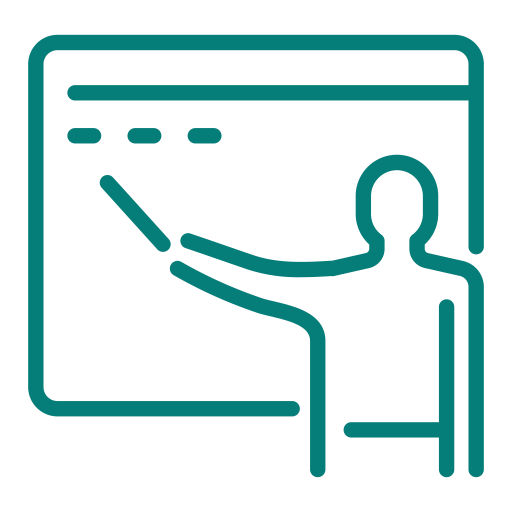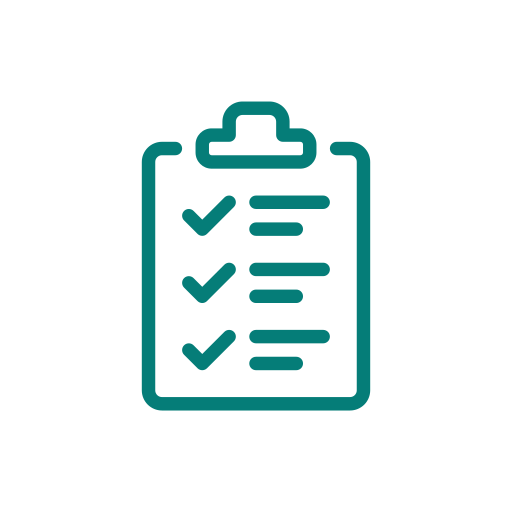Concordia / Library / Copyright Guide / For instructors
For instructors
Overview
Instructors at Concordia University—including professors, librarians, teaching assistants, and instructional designers and consultants—should be aware of how to evaluate the pedagogical use of copyright-protected materials pursuant to relevant exceptions, policies, licences and guidelines.

When using coursepacks, ePacks, Moodle, Course Reserves
Learn more about COPIBEC
Consult the course materials chart
Find out about openly licensed works
Consider Open Educational Resources (OER)
On Moodle it is preferable to provide permanent links to copyrighted materials

In the physical and virtual classroom
Learn more about the scope of fair dealing and educational exceptions
Consult the course materials chart
Find out about openly licensed works
Consider OER

Before placing on the open web
Find out about openly licensed works
Consider OER
Fair dealing and educational exceptions might not apply outside of the protected environment of Moodle
In order to confirm permissions, learn about the terms of use for the work

While considering an Open Educational Resource (OER)
Learn about Creative Commons licenses for collections and remixes
Learn about the scope and limitations of fair dealing
Learn more about support for OER at Concordia
Four options when teaching
You are an instructor with a copyright-protected item that you would like to use. Here are four options to consider when providing the materials for teaching.
1. COPIBEC licence
It is important to understand that the COPIBEC licence does not govern copyright exceptions such as fair dealing and education and examination.
COPIBEC's Reproduction rights licence for Quebec Universities provides for certain rights to allow for the use of copyright-protected works for courses. The licence provides guidelines for coursepacks, ePacks, learning management systems, in-class display and photocopies. Usage limitations in the COPIBEC licence include:
- 20% of a publication
- an article
- a song's lyrics
- a short text from a collective work
- one newspaper page
- one chapter from a book
The COPIBEC licence applies, per Concordia’s Copyright Guidelines for Instructors, provided that the work is not on the COPIBEC exclusion list.
2. Licensed databases
Most of the databases available through the Library have licences that govern use and reproduction of their contents. For instance, some database licences allow for the sending of full-text journal articles to oneself by email, while others do not. Most of the licences limit the usage of the database to non-commercial purposes. If you are uncertain about using a Library-licensed database, please consult the Usage Rights Database or ask a librarian.
Notably, licence agreements are contracts that regulate the reproduction and use of works in manners that differ from the requirements of the Copyright Act. Some licences impose further restrictions on the use and reproduction of works, and some waive or provide certain rights that are otherwise not provided to the user as part of the Copyright Act.
3. Education and examination exceptions
The Copyright Act includes some exceptions to the general prohibitions regarding copyright-protected work. Some of those exceptions allow for copying in specific education and examination purposes.
Read more about Exceptions.
4. Fair dealing
Education is one of the allowable uses under fair dealing. Additional factors must be considered for a fair dealing exception to apply.
Read more about Fair dealing.
Concordia's guiding documents
- Copyright Guidelines for Instructors (Prepared in accordance with Policy SG-2, updated December 2021)
- Policy on Copyright Compliance (Concordia Policy SG-2, 2010)
- The Provost's COBIPEC Memo (Use of copyrighted material for courses, June 2023) and its Appendix (June 2023)
Attribution
In all cases where copyrighted materials are used for the purpose of education, appropriate attribution should be provided that includes the title and creator (as the case may be, the author, performer, maker or broadcaster), if known, and the source for the work. In addition to creator and title details, if you are using a work with a Creative Commons licence, provide attribution information by including the name of the licence, the link to the licence information, and the link to the source.
Course materials
The chart below provides an overview of various ways that course readings can be provided to students with copyright compliance. See more information about different types of materials in Information by type.
Course materials chart
Do you want to...
Create a collection of documents compiled into a print and/or digital coursepack for students to purchase?
Submit materials via Concordia Print Services
Create a digital reading list for students to access for a course?
Submit materials to Library Course Reserves
Provide links directly in Moodle to digital material (including Library-licensed electronic material)?
If you have permission from the rights holder, such as described in an open access licence which includes Open Educational Resources (OER), you may directly link or upload the material to Moodle.
If you have permission from the rights holder, the material is open access, or the material is already in the Library Course Reserves system, you may directly link to the material from Moodle.
If the item is already in the Library Course Reserves system, you may directly link to the material from Moodle.
If the material is not open access, and you do not have permission to reproduce it, submit a request to Library Course Reserves.
Provide digital materials that can be openly retained, reused, revised, remixed and redistributed?
Adopt, customize, create Open Educational Resources (OER), including open textbooks.
Notes:
- Linking to a website or other online reading is preferable if permission is not already granted.
- Rather than uploading documents yourself to Moodle, go through the Library's Course Reserves system which enables linking to the articles from Moodle.
- Acknowledging the source of the material with proper attribution is required when linking to or uploading materials. Include author(s), title, and the source within the citation. Additionally, include the licence for works that are subject to an open access licence.
Guidelines based on where the material is from
Material is from...
Public domain
Description
Works that are not under copyright are generally part of the "public domain." Work in the public domain can normally be freely copied, distributed, adapted, and performed without permission from the author or the payment of royalties.
Just because work is available on the internet does not mean that it is in public domain. Works generally enter public domain either because the duration of copyright over the work has expired or because the copyright owner expressly has placed the work in public domain. If in doubt, do not presume that a work is in public domain.
How to provide
You may copy, upload, or otherwise reproduce the material in your course.
Material is from...
Open Educational Resource (OER)
Description
Teaching and learning materials in any medium that explicitly permit no-cost access, use, adaptation, and redistribution by others for educational purposes.
How to provide
You may copy, upload, or otherwise reproduce the material in your course in accordance with the terms of the material's open licence.
Material is from...
Work available openly on the internet
Description
Web pages or other documents that are publicly available on the internet and are not on a password-protected site or only accessible from select locations (e.g., only accessible in the Library or on-campus).
How to provide
Verify and think twice before reproducing and downloading content in a manner which is not explicitly permitted by the material's terms of use. It is preferable to provide your students with a link to the material so long as it is not to a site known for piracy or otherwise contravening copyright law or other laws.
Material is from...
Journal article, book, report, etc.
Description
Works that are protected by copyright (unless in the public domain or openly licensed).
How to provide
Follow the terms of the COPIBEC licence.
Provide students with a link to the material when possible or submit a request to the Library's Course Reserves in order to have a print item placed on reserve, a portion of a work digitized, or an online material linked from Course Reserves.
If you are assigning an entire ebook or other resource for which Concordia has purchased a licence, you may provide students with a link to the material or submit a request to have the item listed in Course Reserves.
Material is from...
Unpublished work
Description
Works could include your own unpublished course notes, presentations, article manuscripts, etc.
How to provide
Normally, for works that you have authored and have not assigned your copyright to a third party, you are the copyright holder and may use them however you wish.
If you are not the author, permission must be obtained for use, unless an exception applies (education, examination, fair dealing).
Material is from...
Out of print work
Description
Material that is no longer being printed or published digitally but is still covered by copyright.
How to provide
Submit a request to Course Reserves if the item is in the Library's collection.
Guidelines based on where the material is from is adapted from Copyright Flowchart for Course Materials by the University of Victoria Libraries CC BY 4.0.
Open Education Resources (OER)
The high cost of textbooks and other course readings results in many students not purchasing assigned course materials. Students are faced with growing financial barriers to accessing course materials (CARL, 2020). Meanwhile, instructors are encouraged to use the Library's Course Reserves service and consider OER to make materials available to students for free. This can encourage less infringement of copyright on shadow sites and torrenting applications.
OER are considered open because they are either in the public domain or have been released under an open licence that permits no-cost access, use, adaptation and redistribution by others with no or limited restrictions. These open and reusable resources may include textbooks, curricula, syllabi, lecture notes, question banks, audio-video material, assignments, rubrics, etc.
Learn more about OER and how to find, evaluate, adopt, customize, and create them at Concordia University.
Learn more about public domain and open licences, including Creative Commons.
Reference: CARL. (2020). Equitable, affordable access to digital course materials for university students: Issues and solutions.
Using student work protected by copyright
Concordia's Policy on Intellectual Property (VPRGS-9) states that, except for certain exceptional cases, students own intellectual property rights (including copyright) in their own work created in courses or in extra-curricular activities.
Instructors cannot publish or distribute students' original course work without their permission.
Per VPRGS-9, “Student Intellectual Property means any Inventions or Works conceived, developed or first reduced to practice by a Student as work product of a 'for credit' course or extra-curricular activity where such activity is not governed by a Sponsorship Agreement and/or does not involve the Substantial Use of University Facilities, and where such Invention or Work was conceived, developed or first reduced to practice without the inventive contribution of a Non-Student Member” (Definitions section).
Moreover, “students are never obligated to participate in projects or activities that require them to assign their intellectual property rights to someone else” (VPRGS-9, s. 6). However, they can decide to assign their rights if they wish.
The policy also details the requirements for situations when a sponsor (e.g., a third party outside the university) wishes to provide support for a student project: “When a sponsor wishes to use or otherwise rely on Student Intellectual Property, the sponsor is required to sign the Student Research Sponsorship Acknowledgement appended hereto as Annex A in which the sponsor:
- acknowledges that the Student Intellectual Property and any related results are not warranted by the University;
- indemnifies the University against the use of the Student Intellectual Property and related results; and
- acknowledges the Student Intellectual Property and related results are not the work of the University” (section 5).
Page last reviewed on: 2024-05-07